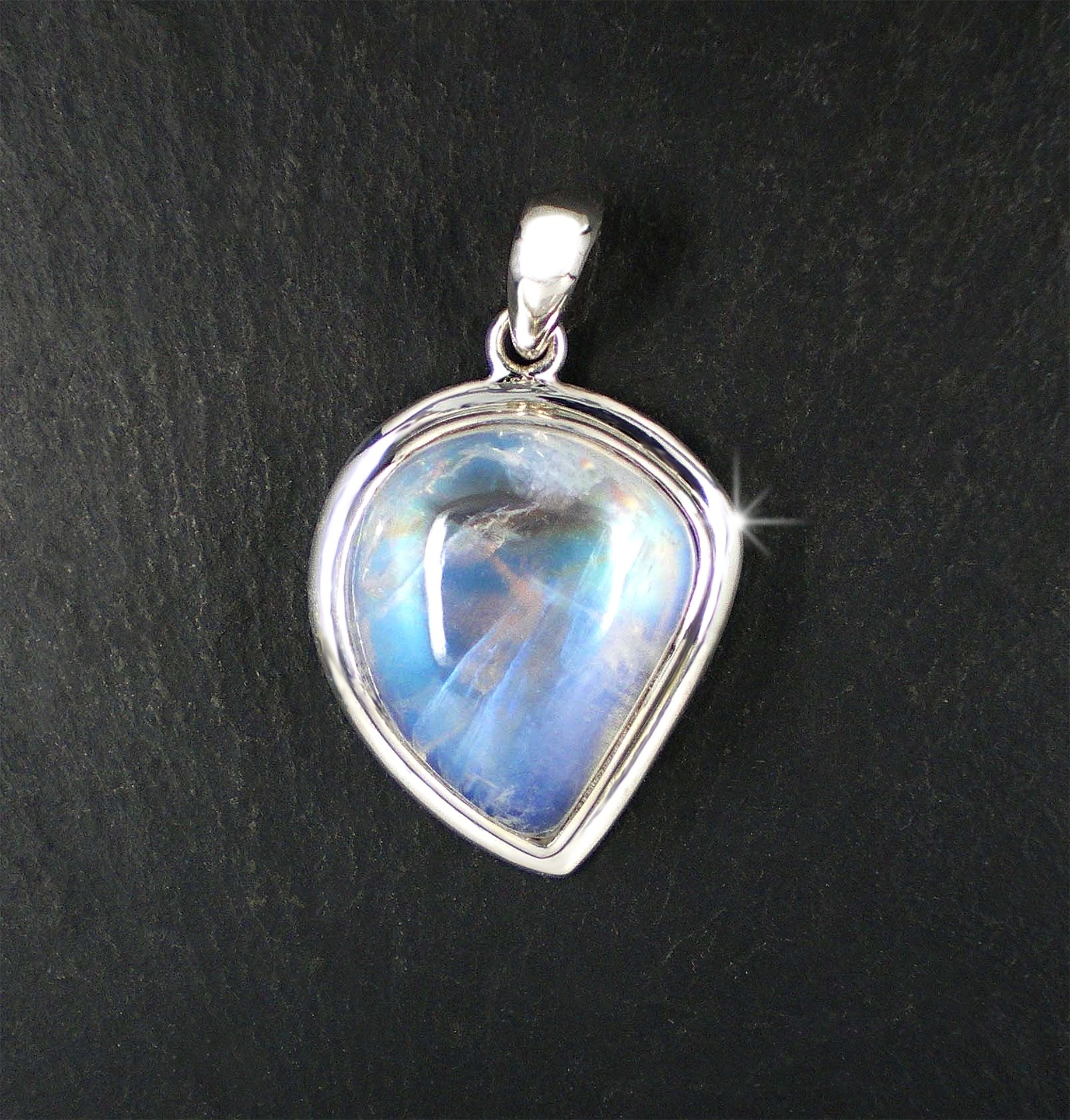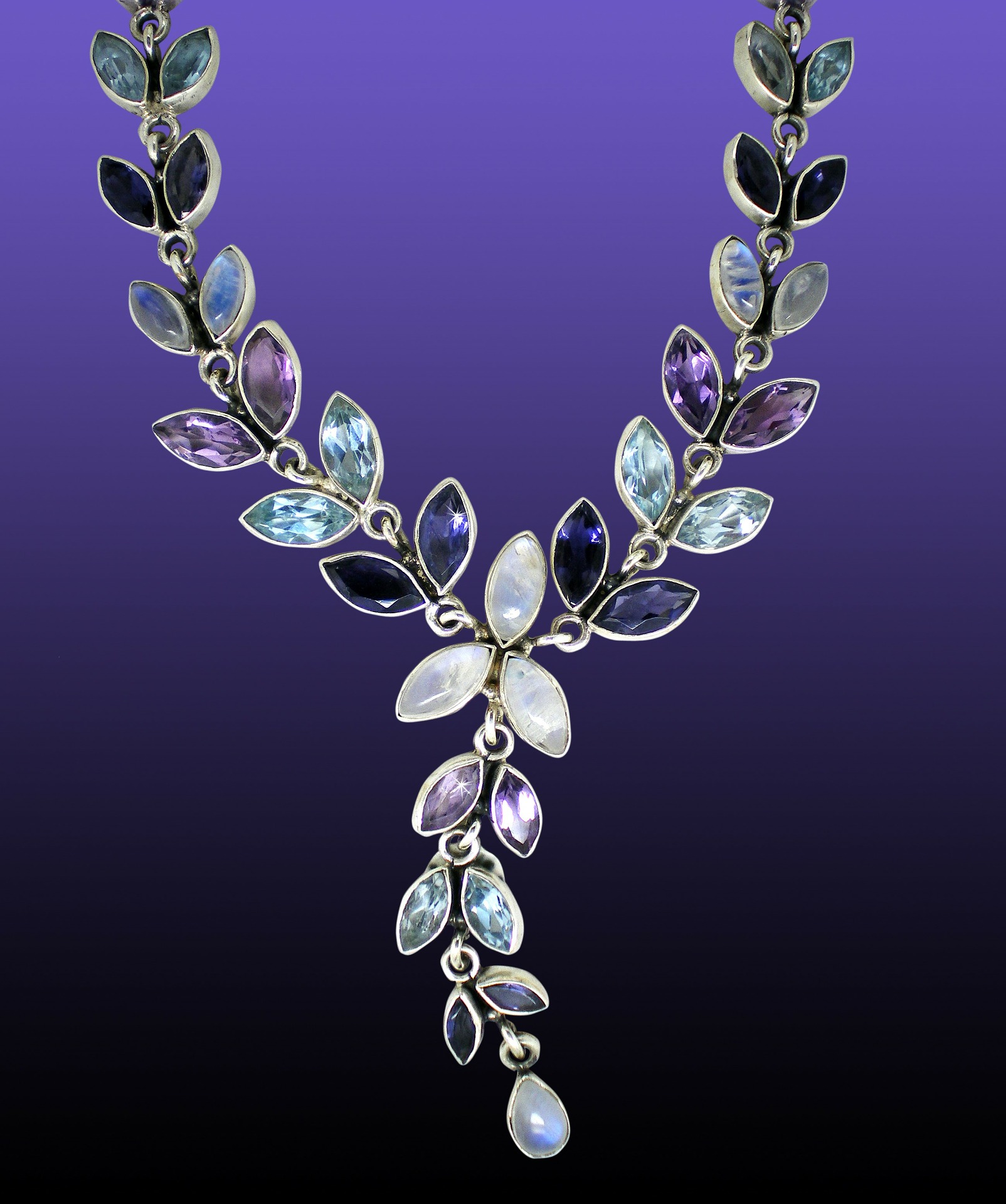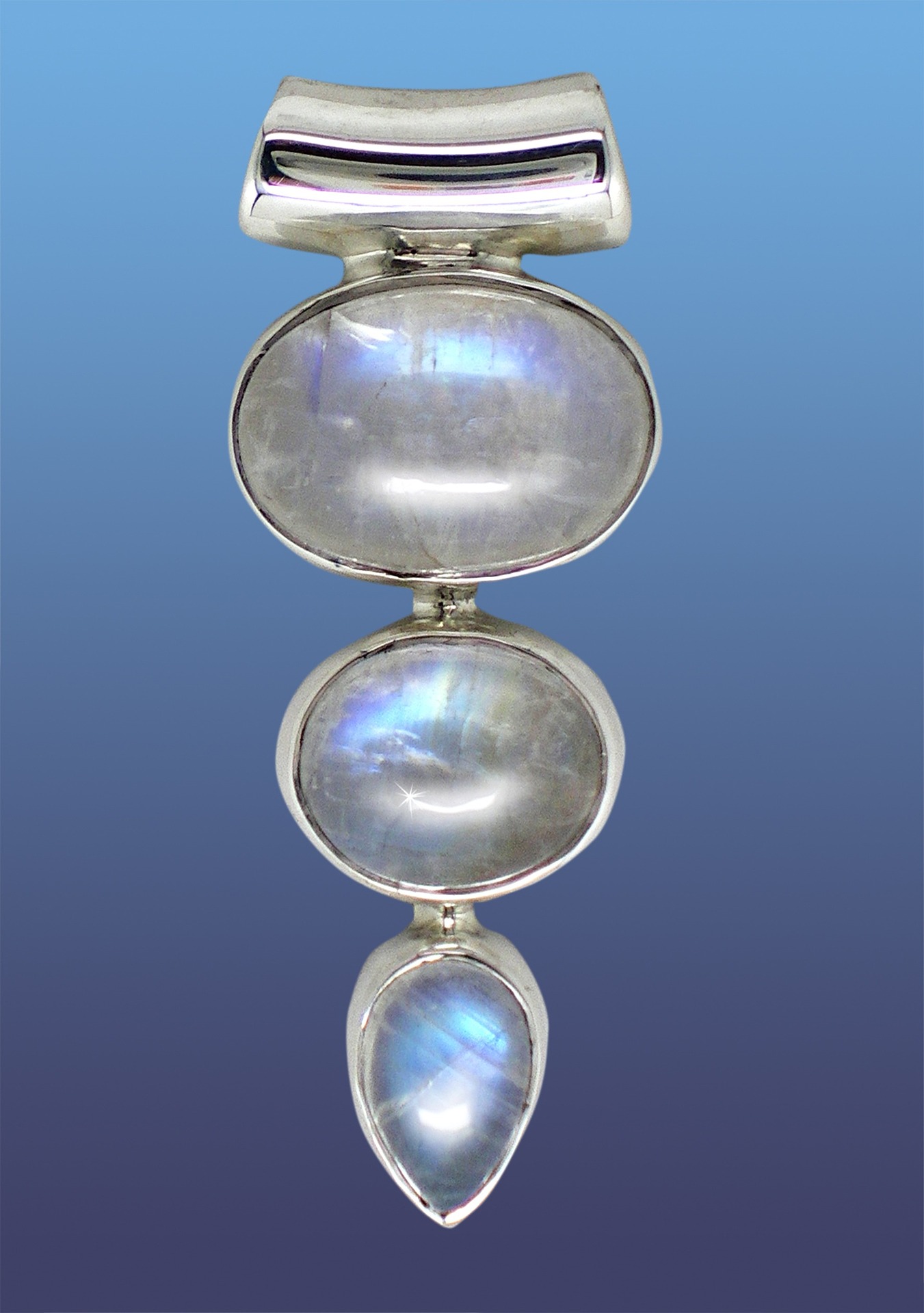The white moonstone carries the energy of the new moon at the peak of its power, stimulating psychic perception, vision and the work of dreams. Since it embodies the energy of light, connecting with a moonstone crystal will also raise your vibration and uplift your spirit.
Moonstone is a calming gem and helps its owner maintain their equilibrium. This men’s that it represents balance, fertility, and stillness. Some moonstones have unique colors, and the color changes the representation. Rainbow moonstone represents many personas living in harmony with one another.
The symbolism behind the moonstone crystal can vary from place to place, however it is believed to represent divine feminine energy. It is called the “Stone of the New Moon” and carries the secrets and powers of the new moon, where everything exists as a potential.
The Significance of Black Moonstone
The black moonstone has all the characteristics of the white moonstone, emphasizing the energy of the new moon or the beginning of things. A stone representing “new beginning”, moonstone is a stone of inner growth and strength. As mentioned earlier, the moonstone symbolizes the balance of sacredness and emotion, making it an excellent gem of harmony in your home.
You can use this stone at any stage of the lunar cycle, but it is particularly powerful during the full moon and the days before and after the full moon. It is believed that the moonstone will regain its strength under the shining of the full moon. Moonstone has been used to make jewelry since ancient civilizations.
The Importance of Moonstone to Art
During the Art Nouveau era in the early 20th century, moonstone was popular with artists and goldsmiths for making jewelry. As mentioned above, moonstones are widely used by jewelers to make exquisite accessories. Moonstone has many colors and types such as cat’s eye, gray, white, pink, iridescent and blue, and is famous for its decoration.
Moonstone has a silver light that seems to come from within, and has many connections with the moon. Moonstone is regarded as the stone of the goddess and is related to the moon, tides, femininity and subconsciousness. Moonstone helps to normalize all the rhythms of the biological clock, and forces the wearer’s body to use all natural forces to live according to natural cycles.
Moonstone & Its Calming Uses
Moonstone is a naturally occurring crystalline mineral that is believed to be able to use the energy of the moon, representing passive and relaxing Yin energy. Moonstone is also considered a calming and healing stone in many cultures, and is usually associated with fertility rituals or rituals.
Moonstone is usually associated with the coronary chakra and is sometimes used during crystal therapy or meditation to get rid of negative thoughts, relieve pain, help treat pregnancy-related diseases and reduce stress. Moonstone is also believed to bring good luck, enhance intuition, provide protection, and bring love and career success.
As the name suggests, in humans, the moonstone is closely related to the moon. The meaning of the moonstone crystal stone is associated with the energy of the moon.
Rainbow and Ornamental Moonstone
Rainbow Moonstone is highly regarded for its feminine energy vibration or goddess vibration, and the gem itself seems to glow from within. The rainbow moonstone is related to the divine feminine and the energy of the moon. If you feel out of touch with the female side, moonstone is said to restore balance between your male and female energies.
Using moonstones, especially white moonstones, will bring you awareness and the energy of awareness, helping you to move forward on the road of happiness, wisdom and health.
Whether you decide to take moonstone home or want to use it as the core ornament of gemstone jewelry, it is for those who want to wash away negative energy, balance emotions and accept more feminine feelings. Life will love this watery white and beautiful shiny stone.
For those who desire more goddess energy, who want to stand above the overall situation, and those who may need some extra help in embracing the positive energy brought about by change, moonstones may just bring radiant gemstones in.
Whtie Moonstone Soothes Interpersonal Relationships
White moonstone has meaning and properties to make human relationships smooth. The positive and uplifting energy of the rainbow moonstone makes it a great love stone. It is a stone of desires and hopes, as well as a stone for embracing the cycles of change. Because of its symbolic connection with the moon, the moonstone is also considered a symbol of new beginnings.
Moonstone activates the creative and intuitive power of female energy. Its energy balance and healing help control emotions by placing emotions under the control of a higher will, rather than expressing or suppressing emotions. Associated with the feminine principle, it enhances the intuitive aspect of the mind.
For women, the Moonstone reveals their feminine power and clairvoyance abilities and gives rise to kundalini energy. The moonstone is also a stone of love and eroticism that stimulates kundalini energy and carnal desires. White moonstone has significance and properties for increasing childbirth luck.
Moonstone and the Crown Chakra
When used on the crown, the rainbow moonstone will gently open the chakras, allowing the benevolent energy of the universe and the natural world to flow into and flow through us in the form of pure white light of love and healing. The white crystal energy present in all moonstones is related to the crown chakra and our spiritual center.
They represent personal identification with infinity, oneness with God, peace and wisdom. Therefore, placing the moonstone on the crown chakra is a good way to amplify its energy and release the energy of the chakra.
It is believed that immersing the moonstone in a natural pool of fresh water attracts the accumulated negative energy, leaving it clean and ready for healing. If you wear a moonstone regularly, you will begin to realize that negative energies are playing into the grand scheme of your being, and eventually learn to heal yourself. Enjoy divine femininity, find your luck and say yes to deeper levels of crystal healing with the power of moonstone.
Moonstone Invigorates the Soul and Strengthens Intuition
Transferring the powerful energy of the moon to the human soul, the stone strengthens your intuition, allows you to overcome melancholy and resentment. The soothing energy of moonstone heals emotional trauma and brings balance to people’s lives. Calm your emotions and build good relationships with the people around you.
His loving energy promotes the Divine in all situations and is emotional support for intuitive or sensitive children.
In order to charge the rainbow moonstone and keep its energy vibration at a high level, try to place the crystal under the full moon light every month. Charging the moonstone is particularly effective during the full or new moon.
However, it is generally believed that moonstone should be charged in the moonlight to purify its residual negative energy and replenish its healing power. If you use moonstone in combination with the power of the moon to adjust to a higher natural consciousness, be sure to use a stone that uses the power of the sun at the same time.






